chapter: 14 > > Krugman/Wells Economics ©

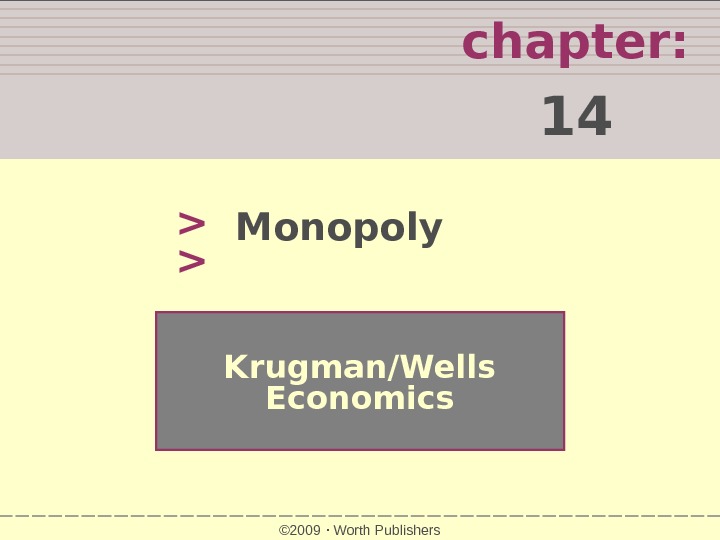
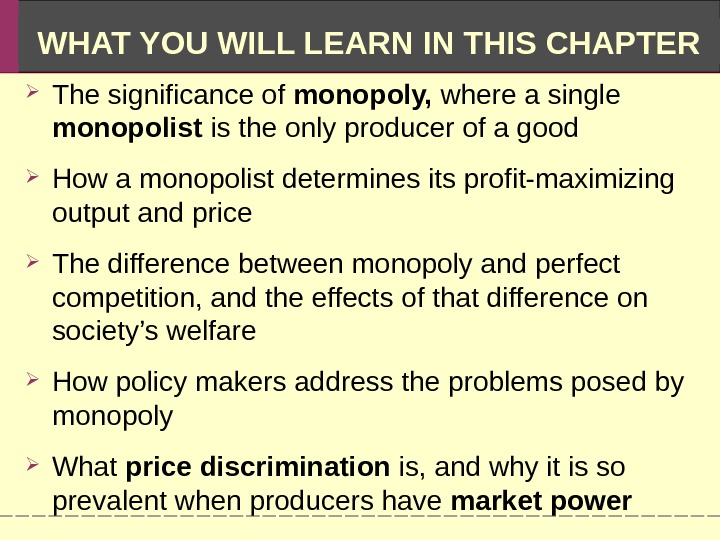
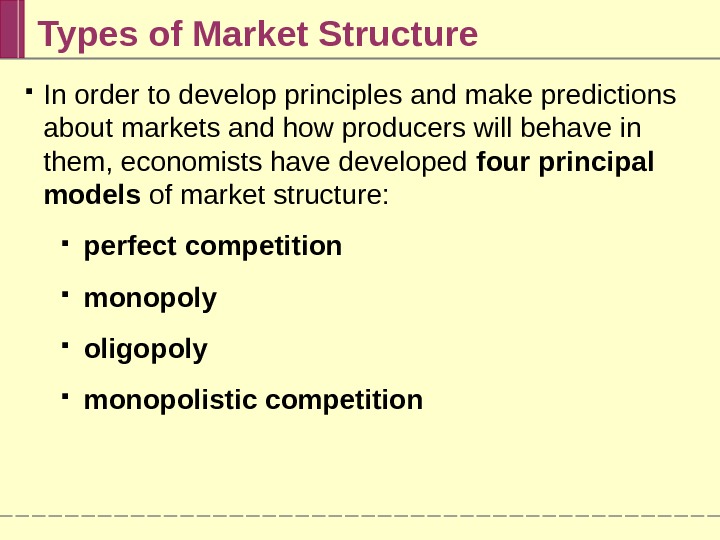
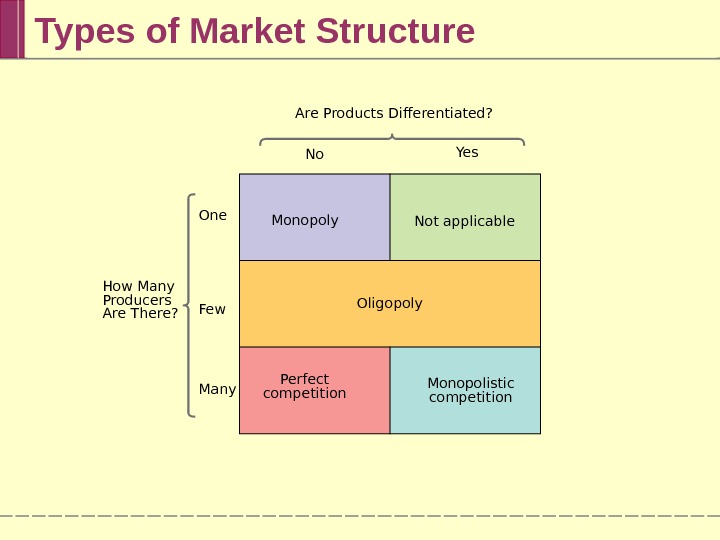
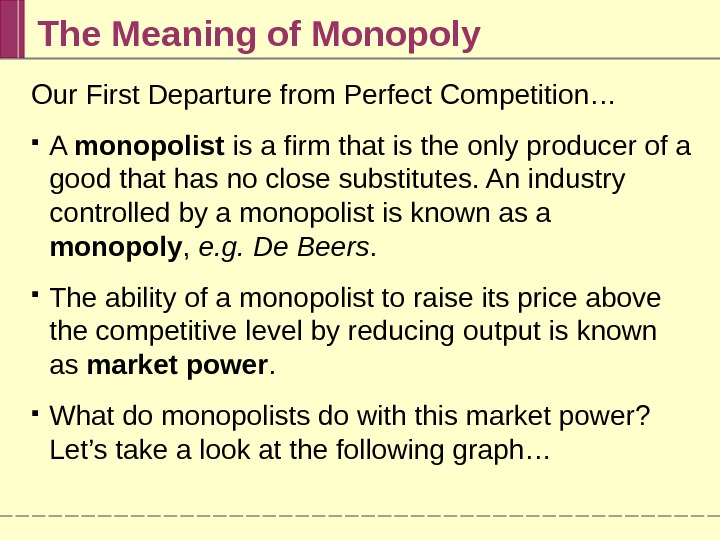
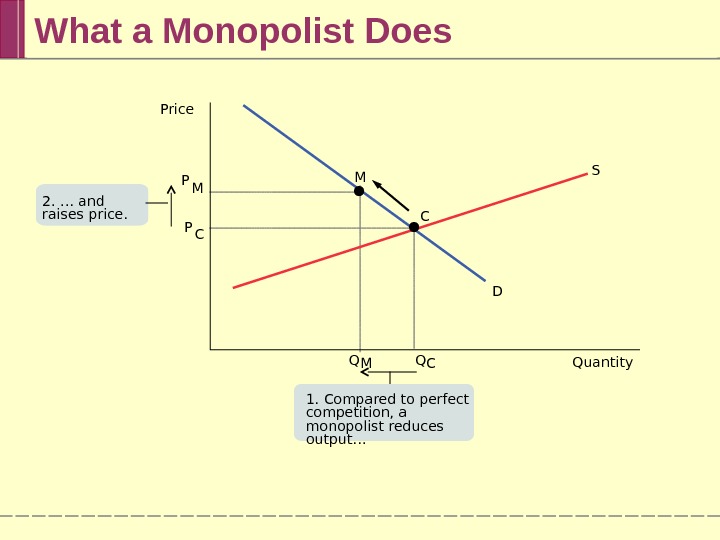
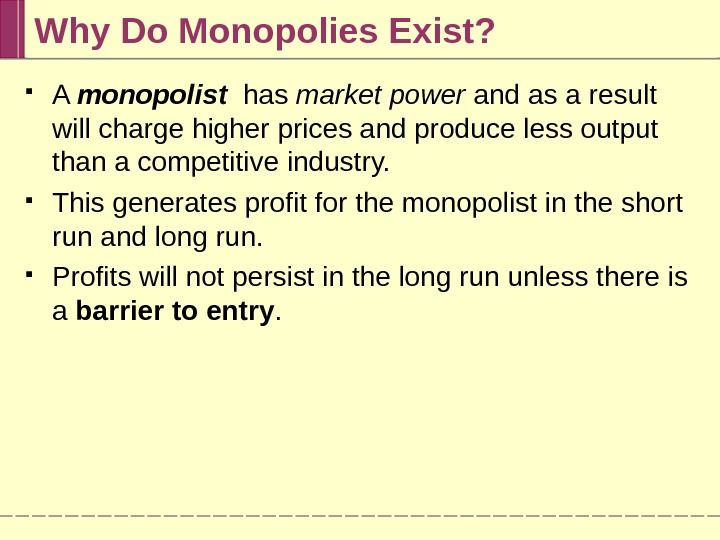
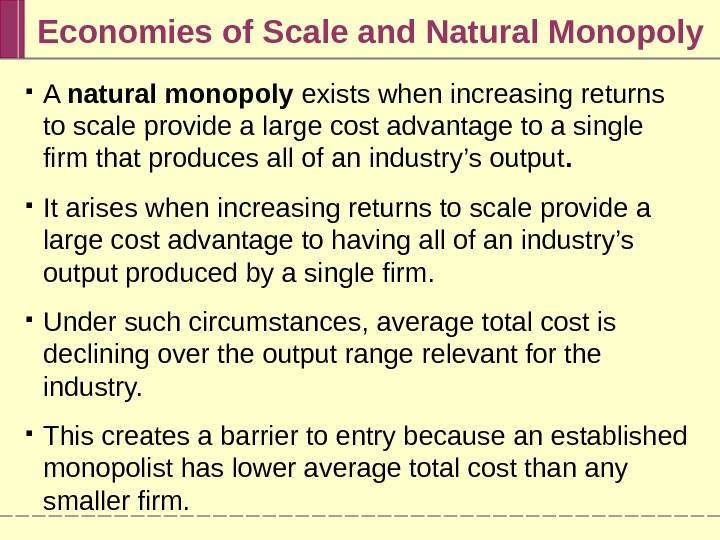
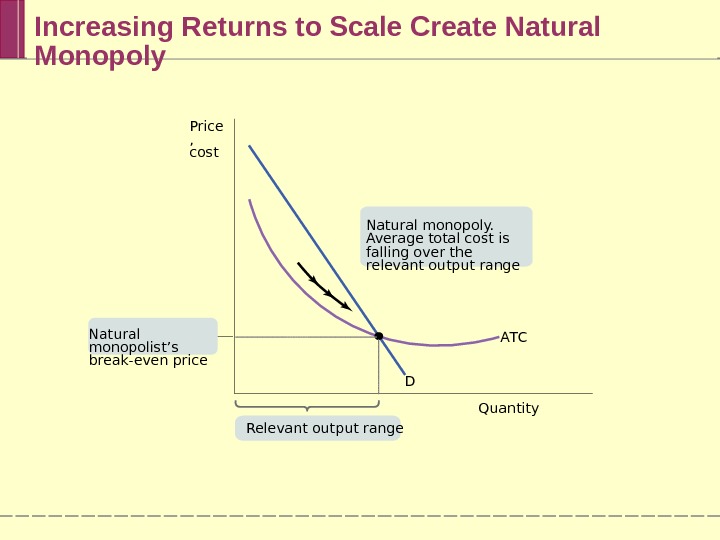
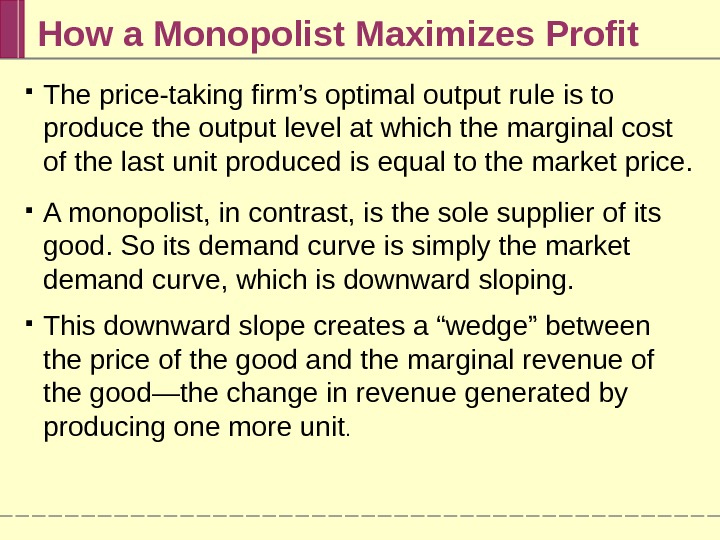
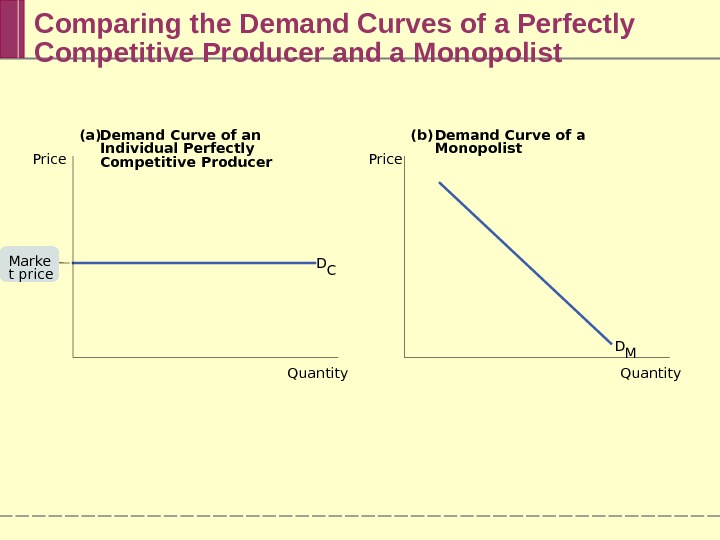
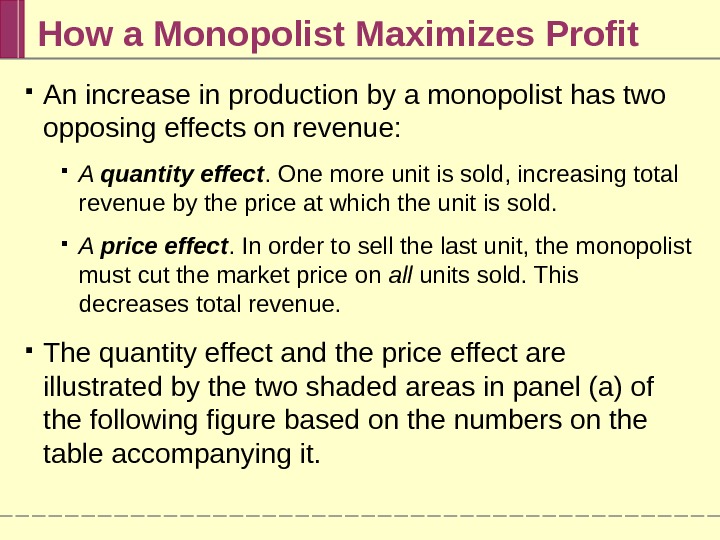
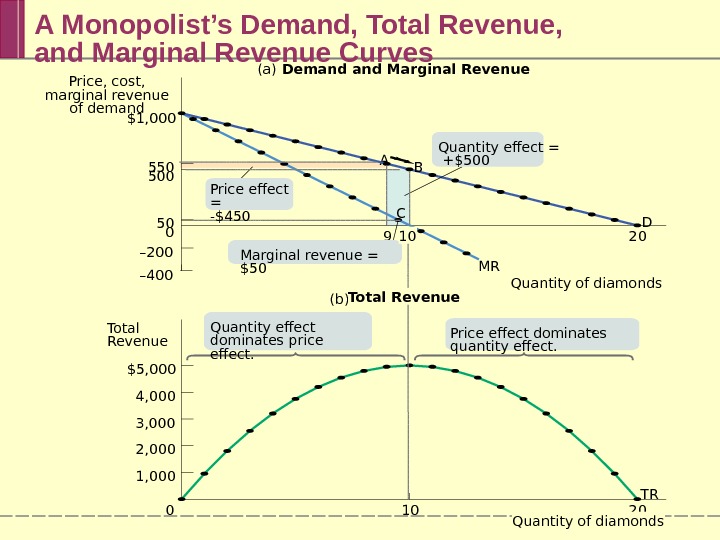
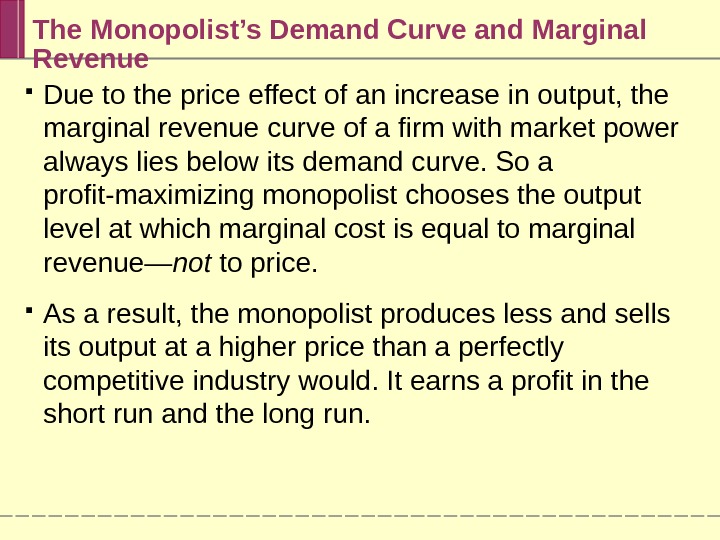
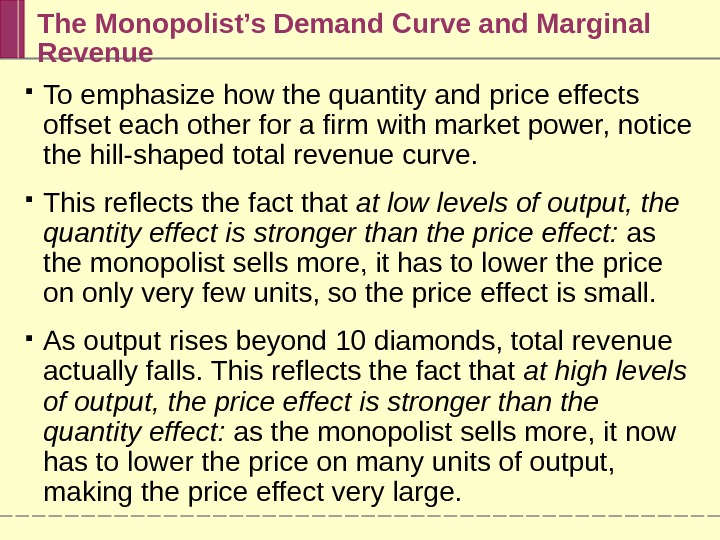
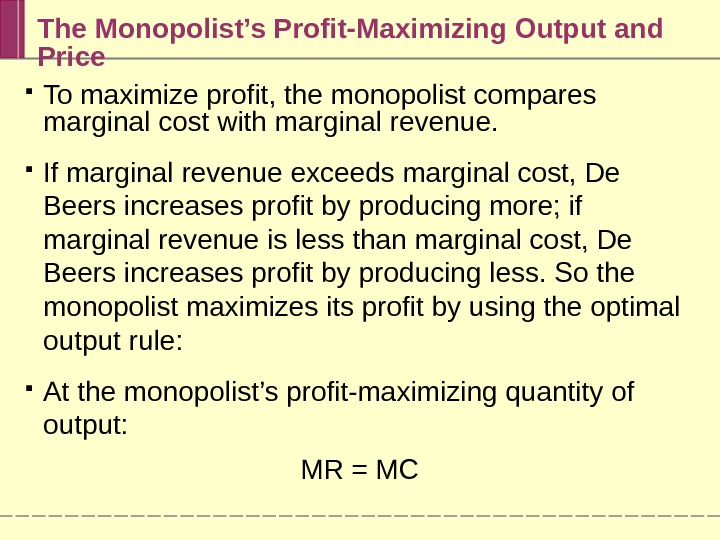
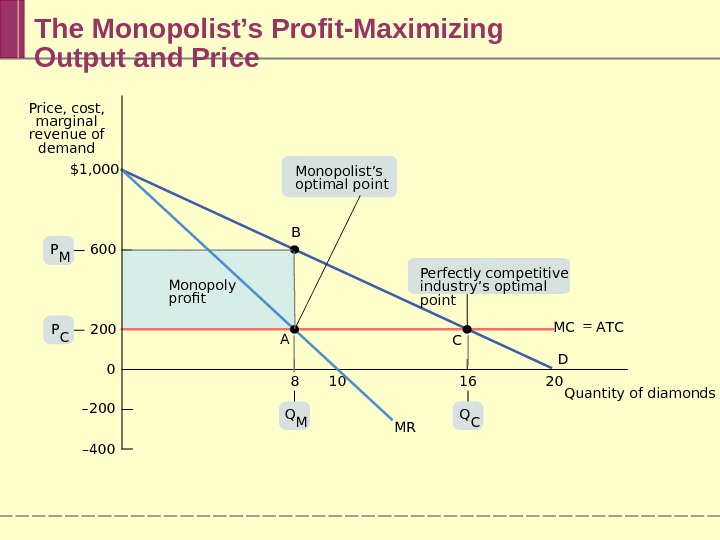
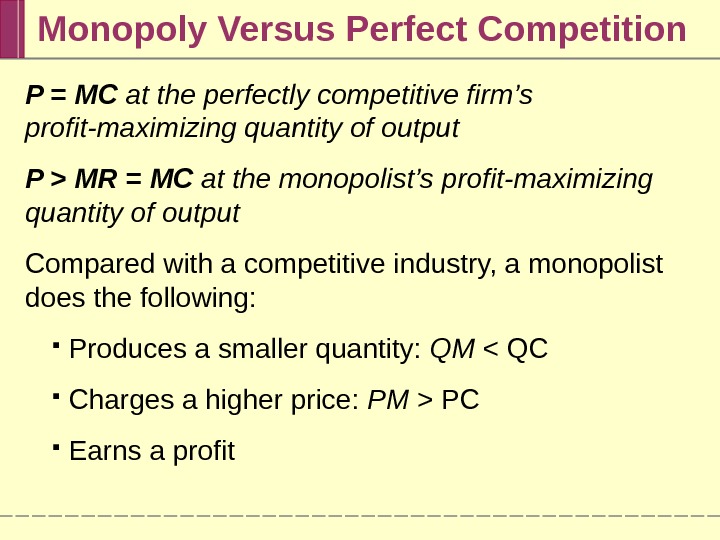
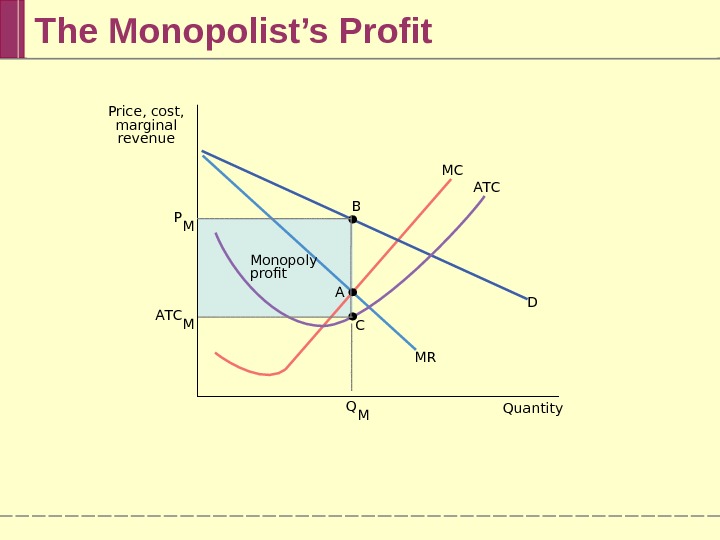
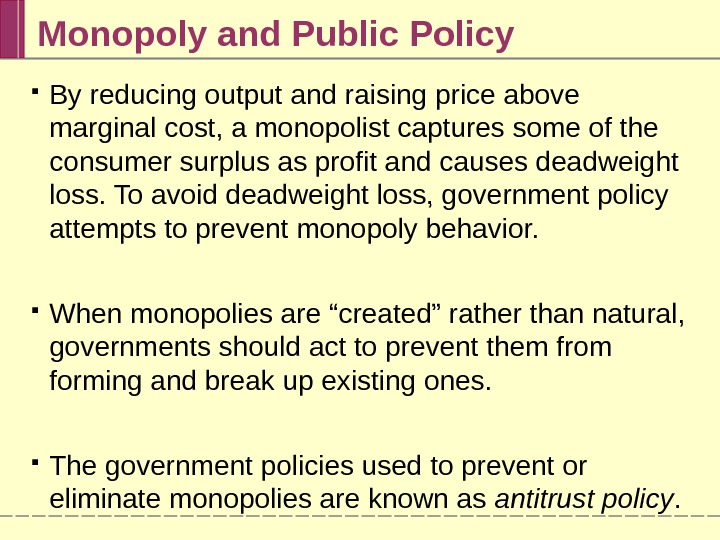
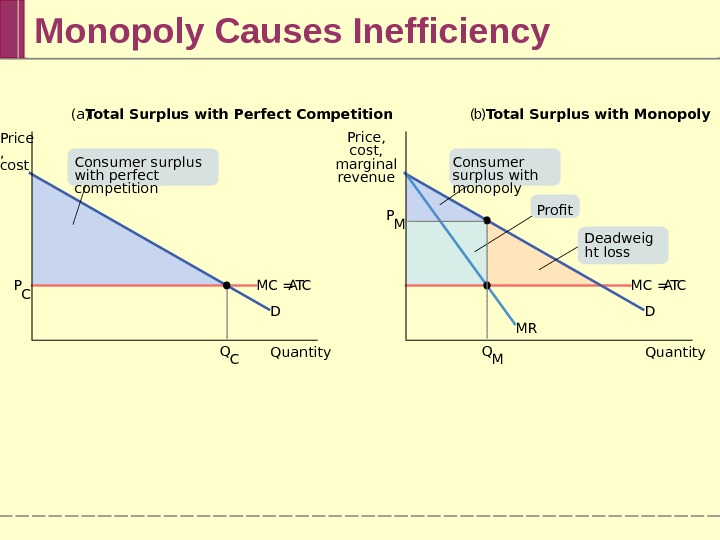
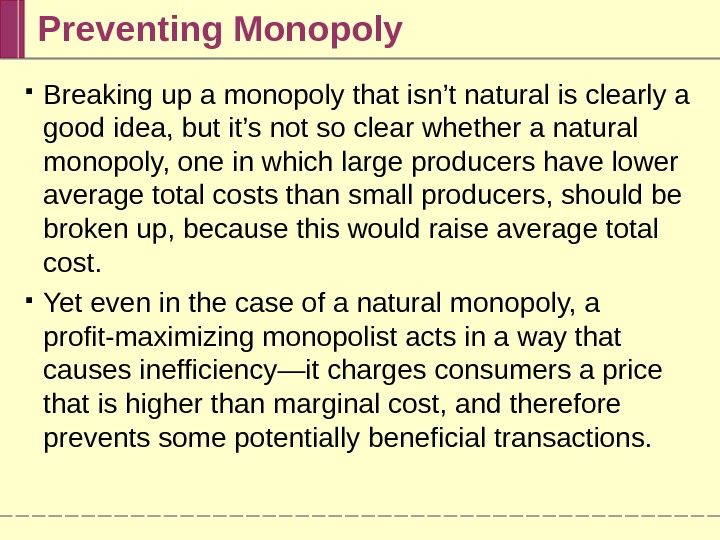
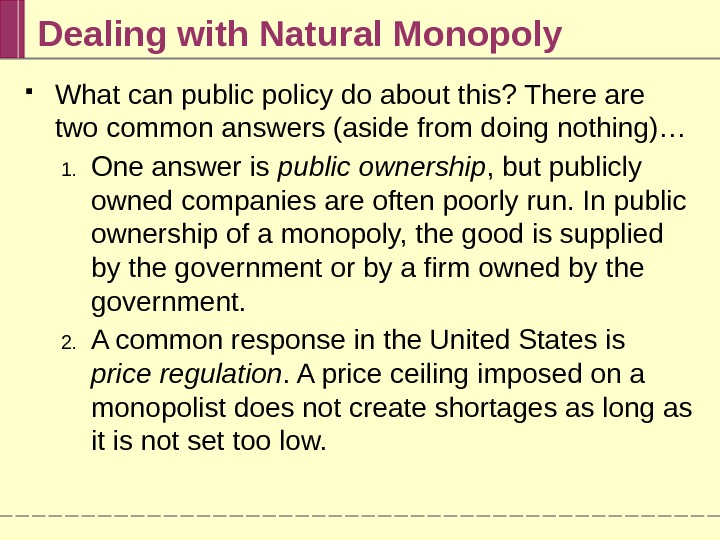
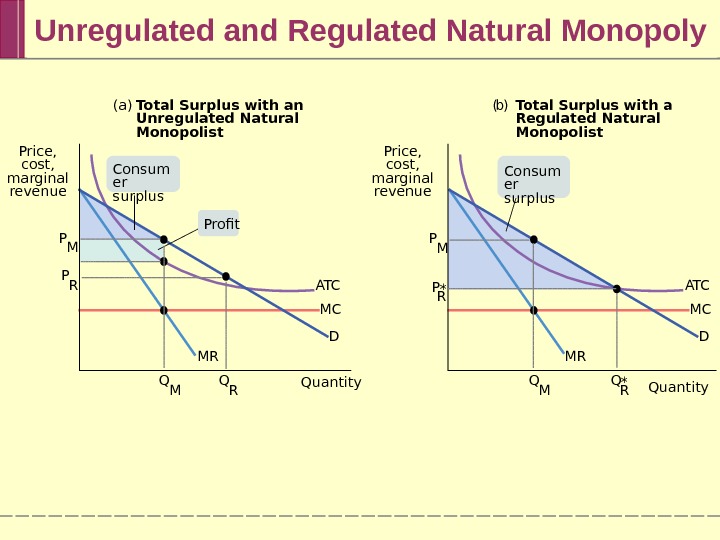
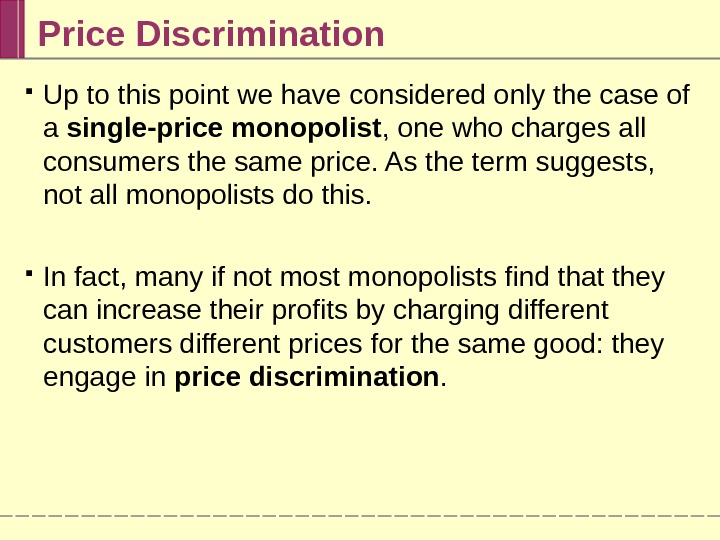
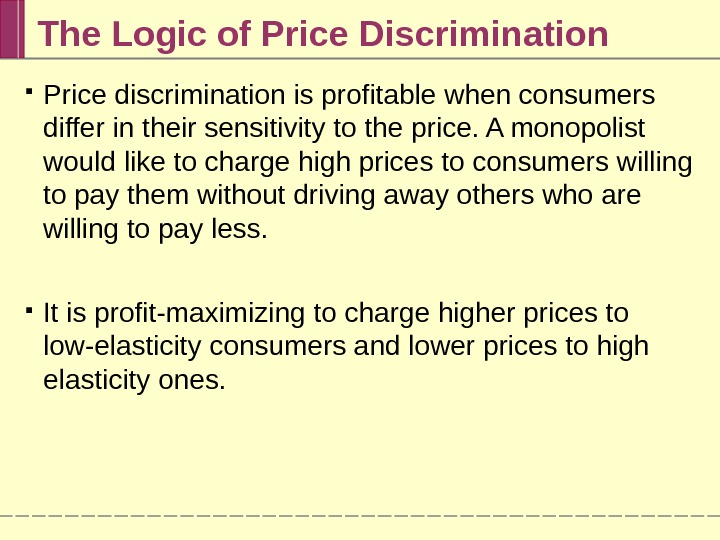
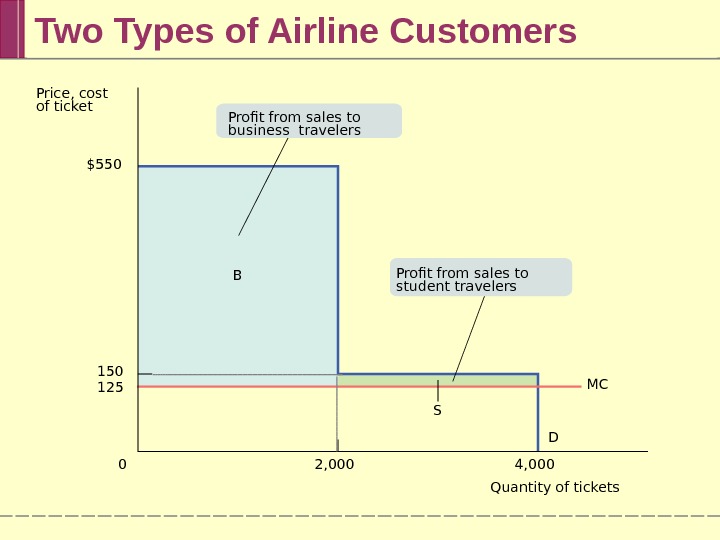
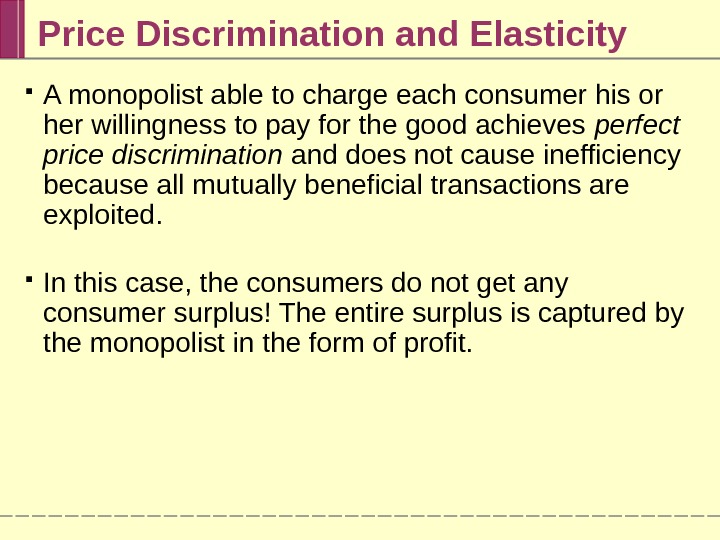
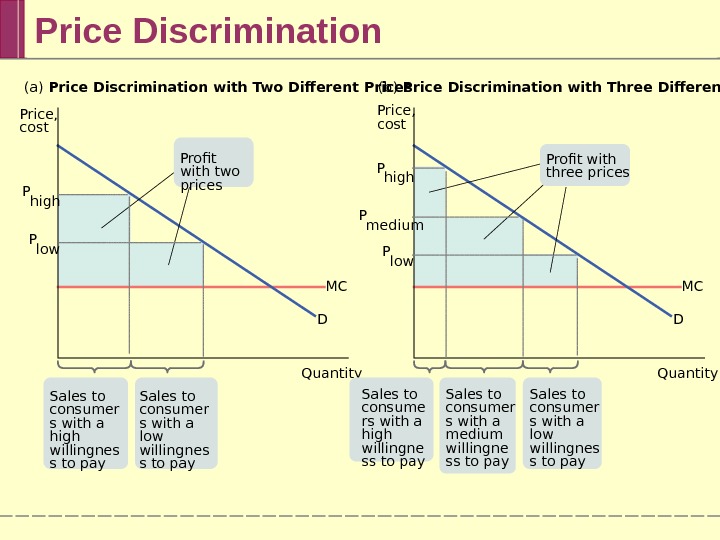
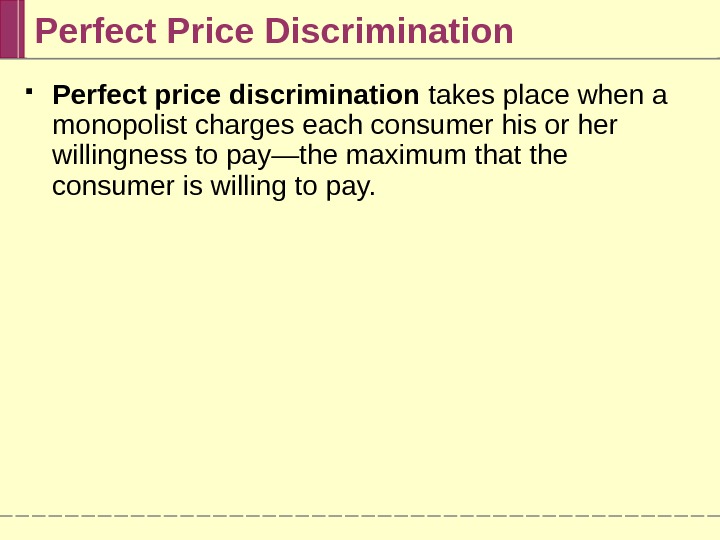
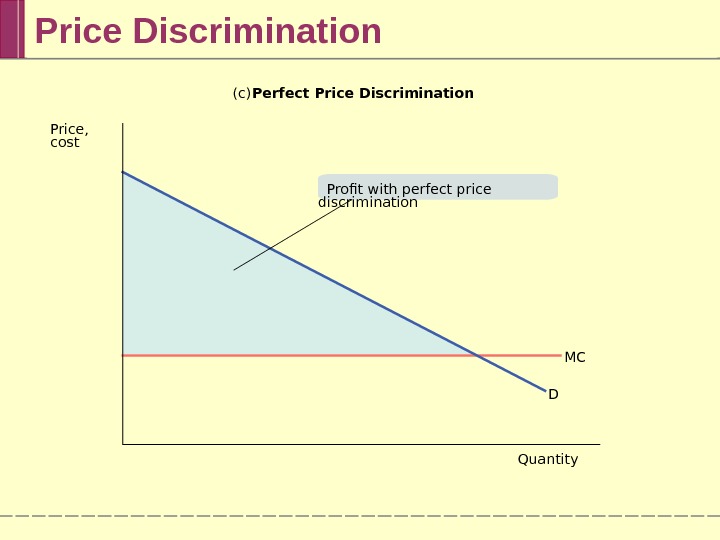
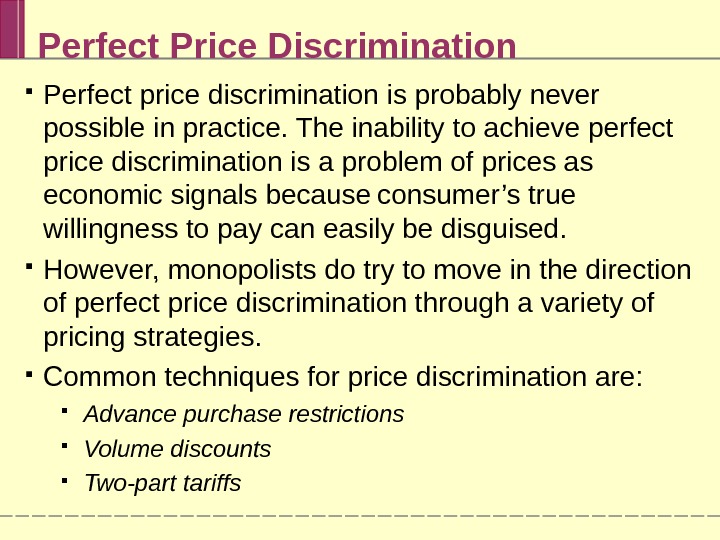
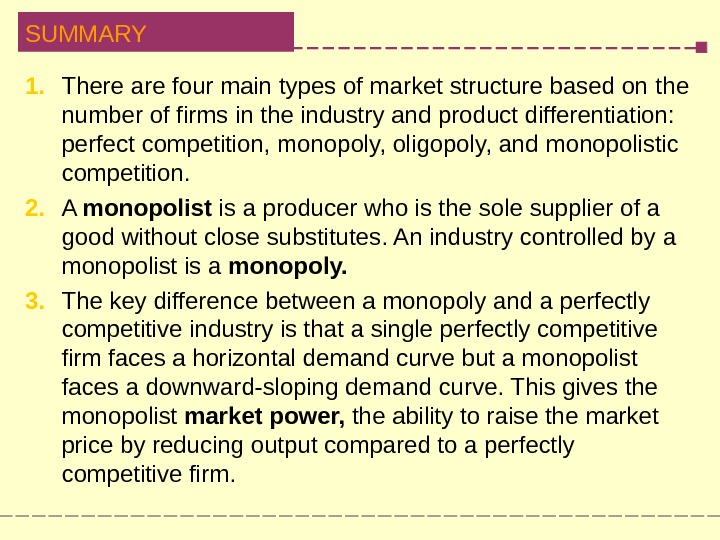
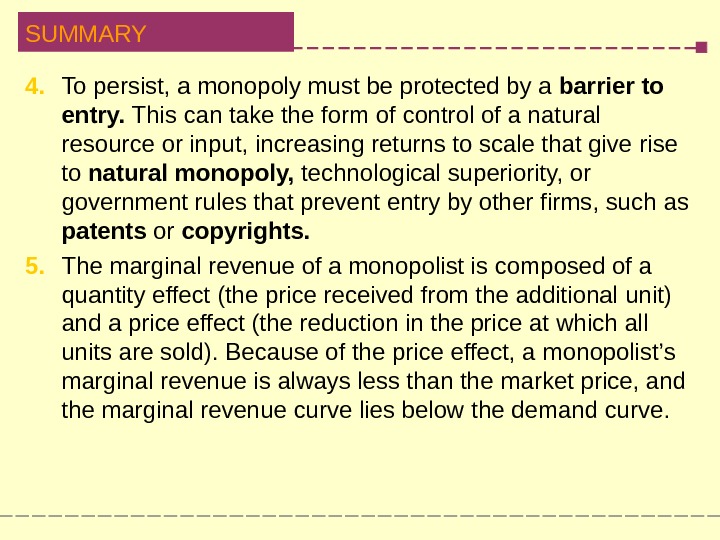
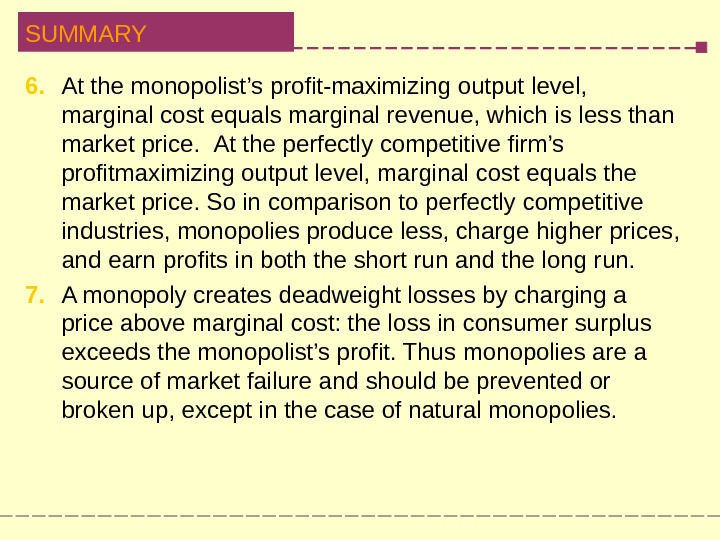
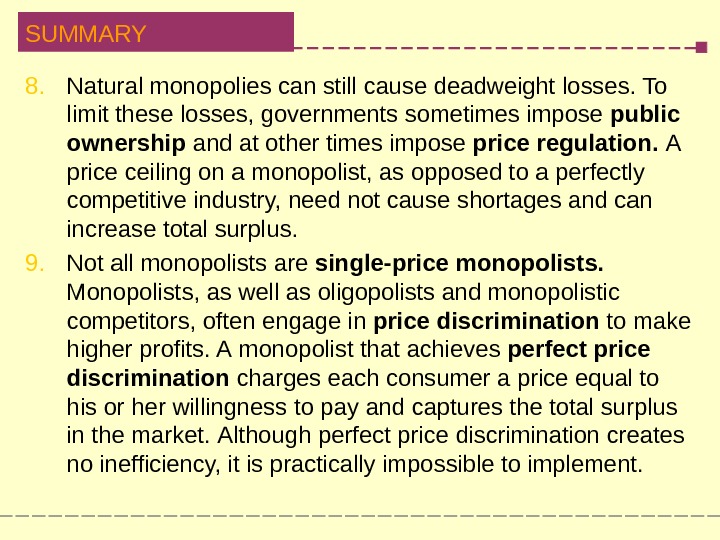
- Размер: 1.2 Mегабайта
- Количество слайдов: 36
Описание презентации chapter: 14 > > Krugman/Wells Economics © по слайдам
 chapter: 14 > > Krugman/Wells Economics © 2009 Worth Publishers. Monopoly
chapter: 14 > > Krugman/Wells Economics © 2009 Worth Publishers. Monopoly
 WHAT YOU WILL LEARN IN THIS CHAPTER The significance of monopoly, where a single monopolist is the only producer of a good How a monopolist determines its profit-maximizing output and price The difference between monopoly and perfect competition, and the effects of that difference on society’s welfare How policy makers address the problems posed by monopoly What price discrimination is, and why it is so prevalent when producers have market power
WHAT YOU WILL LEARN IN THIS CHAPTER The significance of monopoly, where a single monopolist is the only producer of a good How a monopolist determines its profit-maximizing output and price The difference between monopoly and perfect competition, and the effects of that difference on society’s welfare How policy makers address the problems posed by monopoly What price discrimination is, and why it is so prevalent when producers have market power
 Types of Market Structure In order to develop principles and make predictions about markets and how producers will behave in them, economists have developed four principal models of market structure: perfect competition monopoly oligopoly monopolistic competition
Types of Market Structure In order to develop principles and make predictions about markets and how producers will behave in them, economists have developed four principal models of market structure: perfect competition monopoly oligopoly monopolistic competition
 Types of Market Structure Are Products Differentiated? How Many Producers Are There? Oligopoly Perfect competition No One Few Many Yes Monopolistic competition. Not applicable. Monopoly
Types of Market Structure Are Products Differentiated? How Many Producers Are There? Oligopoly Perfect competition No One Few Many Yes Monopolistic competition. Not applicable. Monopoly
 The Meaning of Monopoly Our First Departure from Perfect Competition… A monopolist is a firm that is the only producer of a good that has no close substitutes. An industry controlled by a monopolist is known as a monopoly , e. g. De Beers. The ability of a monopolist to raise its price above the competitive level by reducing output is known as market power. What do monopolists do with this market power? Let’s take a look at the following graph…
The Meaning of Monopoly Our First Departure from Perfect Competition… A monopolist is a firm that is the only producer of a good that has no close substitutes. An industry controlled by a monopolist is known as a monopoly , e. g. De Beers. The ability of a monopolist to raise its price above the competitive level by reducing output is known as market power. What do monopolists do with this market power? Let’s take a look at the following graph…
 What a Monopolist Does M C S D Q CQ M Quantity. Price P M P C 2. … and raises price. 1. Compared to perfect competition, a monopolist reduces output…
What a Monopolist Does M C S D Q CQ M Quantity. Price P M P C 2. … and raises price. 1. Compared to perfect competition, a monopolist reduces output…
 Why Do Monopolies Exist? A monopolist has market power and as a result will charge higher prices and produce less output than a competitive industry. This generates profit for the monopolist in the short run and long run. Profits will not persist in the long run unless there is a barrier to entry.
Why Do Monopolies Exist? A monopolist has market power and as a result will charge higher prices and produce less output than a competitive industry. This generates profit for the monopolist in the short run and long run. Profits will not persist in the long run unless there is a barrier to entry.
 Economies of Scale and Natural Monopoly A natural monopoly exists when increasing returns to scale provide a large cost advantage to a single firm that produces all of an industry’s output. It arises when increasing returns to scale provide a large cost advantage to having all of an industry’s output produced by a single firm. Under such circumstances, average total cost is declining over the output range relevant for the industry. This creates a barrier to entry because an established monopolist has lower average total cost than any smaller firm.
Economies of Scale and Natural Monopoly A natural monopoly exists when increasing returns to scale provide a large cost advantage to a single firm that produces all of an industry’s output. It arises when increasing returns to scale provide a large cost advantage to having all of an industry’s output produced by a single firm. Under such circumstances, average total cost is declining over the output range relevant for the industry. This creates a barrier to entry because an established monopolist has lower average total cost than any smaller firm.
 Increasing Returns to Scale Create Natural Monopoly D A T C Quantity. Price , cost Relevant output range Natural monopoly. Average total cost is falling over the relevant output range Natural monopolist’s break-even price
Increasing Returns to Scale Create Natural Monopoly D A T C Quantity. Price , cost Relevant output range Natural monopoly. Average total cost is falling over the relevant output range Natural monopolist’s break-even price
 How a Monopolist Maximizes Profit The price-taking firm’s optimal output rule is to produce the output level at which the marginal cost of the last unit produced is equal to the market price. A monopolist, in contrast, is the sole supplier of its good. So its demand curve is simply the market demand curve, which is downward sloping. This downward slope creates a “wedge” between the price of the good and the marginal revenue of the good—the change in revenue generated by producing one more unit.
How a Monopolist Maximizes Profit The price-taking firm’s optimal output rule is to produce the output level at which the marginal cost of the last unit produced is equal to the market price. A monopolist, in contrast, is the sole supplier of its good. So its demand curve is simply the market demand curve, which is downward sloping. This downward slope creates a “wedge” between the price of the good and the marginal revenue of the good—the change in revenue generated by producing one more unit.
 Comparing the Demand Curves of a Perfectly Competitive Producer and a Monopolist (a) Demand Curve of an Individual Perfectly Competitive Producer D C Price (b) Demand Curve of a Monopolist D MMarke t price Quantity. Price
Comparing the Demand Curves of a Perfectly Competitive Producer and a Monopolist (a) Demand Curve of an Individual Perfectly Competitive Producer D C Price (b) Demand Curve of a Monopolist D MMarke t price Quantity. Price
 How a Monopolist Maximizes Profit An increase in production by a monopolist has two opposing effects on revenue: A quantity effect. One more unit is sold, increasing total revenue by the price at which the unit is sold. A price effect. In order to sell the last unit, the monopolist must cut the market price on all units sold. This decreases total revenue. The quantity effect and the price effect are illustrated by the two shaded areas in panel (a) of the following figure based on the numbers on the table accompanying it.
How a Monopolist Maximizes Profit An increase in production by a monopolist has two opposing effects on revenue: A quantity effect. One more unit is sold, increasing total revenue by the price at which the unit is sold. A price effect. In order to sell the last unit, the monopolist must cut the market price on all units sold. This decreases total revenue. The quantity effect and the price effect are illustrated by the two shaded areas in panel (a) of the following figure based on the numbers on the table accompanying it.
 A Monopolist’s Demand, Total Revenue, and Marginal Revenue Curves A MR TR D(a) 9 20$1, 000 – 200 – 400 500550 050 Quantity of diamonds (b) 0 10 20$5, 000 4, 000 3, 000 2, 000 1, 000 Total Revenue B CDemand Marginal Revenue Total Revenue. Price, cost, marginal revenue of demand Price effect = -$450 Quantity effect = +$500 Marginal revenue = $50 Quantity effect dominates price effect. Price effect dominates quantity effect. 10 Quantity of diamonds
A Monopolist’s Demand, Total Revenue, and Marginal Revenue Curves A MR TR D(a) 9 20$1, 000 – 200 – 400 500550 050 Quantity of diamonds (b) 0 10 20$5, 000 4, 000 3, 000 2, 000 1, 000 Total Revenue B CDemand Marginal Revenue Total Revenue. Price, cost, marginal revenue of demand Price effect = -$450 Quantity effect = +$500 Marginal revenue = $50 Quantity effect dominates price effect. Price effect dominates quantity effect. 10 Quantity of diamonds
 The Monopolist’s Demand Curve and Marginal Revenue Due to the price effect of an increase in output, the marginal revenue curve of a firm with market power always lies below its demand curve. So a profit-maximizing monopolist chooses the output level at which marginal cost is equal to marginal revenue— not to price. As a result, the monopolist produces less and sells its output at a higher price than a perfectly competitive industry would. It earns a profit in the short run and the long run.
The Monopolist’s Demand Curve and Marginal Revenue Due to the price effect of an increase in output, the marginal revenue curve of a firm with market power always lies below its demand curve. So a profit-maximizing monopolist chooses the output level at which marginal cost is equal to marginal revenue— not to price. As a result, the monopolist produces less and sells its output at a higher price than a perfectly competitive industry would. It earns a profit in the short run and the long run.
 The Monopolist’s Demand Curve and Marginal Revenue To emphasize how the quantity and price effects offset each other for a firm with market power, notice the hill-shaped total revenue curve. This reflects the fact that at low levels of output, the quantity effect is stronger than the price effect: as the monopolist sells more, it has to lower the price on only very few units, so the price effect is small. As output rises beyond 10 diamonds, total revenue actually falls. This reflects the fact that at high levels of output, the price effect is stronger than the quantity effect: as the monopolist sells more, it now has to lower the price on many units of output, making the price effect very large.
The Monopolist’s Demand Curve and Marginal Revenue To emphasize how the quantity and price effects offset each other for a firm with market power, notice the hill-shaped total revenue curve. This reflects the fact that at low levels of output, the quantity effect is stronger than the price effect: as the monopolist sells more, it has to lower the price on only very few units, so the price effect is small. As output rises beyond 10 diamonds, total revenue actually falls. This reflects the fact that at high levels of output, the price effect is stronger than the quantity effect: as the monopolist sells more, it now has to lower the price on many units of output, making the price effect very large.
 The Monopolist’s Profit-Maximizing Output and Price To maximize profit, the monopolist compares marginal cost with marginal revenue. If marginal revenue exceeds marginal cost, De Beers increases profit by producing more; if marginal revenue is less than marginal cost, De Beers increases profit by producing less. So the monopolist maximizes its profit by using the optimal output rule: At the monopolist’s profit-maximizing quantity of output: MR = M
The Monopolist’s Profit-Maximizing Output and Price To maximize profit, the monopolist compares marginal cost with marginal revenue. If marginal revenue exceeds marginal cost, De Beers increases profit by producing more; if marginal revenue is less than marginal cost, De Beers increases profit by producing less. So the monopolist maximizes its profit by using the optimal output rule: At the monopolist’s profit-maximizing quantity of output: MR = M
 The Monopolist’s Profit-Maximizing Output and Price B C MRMonopoly profit MC A T C D$1, 000 200600 – 200 – 400 0 Quantity of diamonds 8 10 2016 AP CP M Q CPrice, cost, marginal revenue of demand Monopolist’s optimal point Perfectly competitive industry’s optimal point
The Monopolist’s Profit-Maximizing Output and Price B C MRMonopoly profit MC A T C D$1, 000 200600 – 200 – 400 0 Quantity of diamonds 8 10 2016 AP CP M Q CPrice, cost, marginal revenue of demand Monopolist’s optimal point Perfectly competitive industry’s optimal point
 Monopoly Versus Perfect Competition P = MC at the perfectly competitive firm’s profit-maximizing quantity of output P > MR = MC at the monopolist’s profit-maximizing quantity of output Compared with a competitive industry, a monopolist does the following: Produces a smaller quantity: QM PC Earns a profit
Monopoly Versus Perfect Competition P = MC at the perfectly competitive firm’s profit-maximizing quantity of output P > MR = MC at the monopolist’s profit-maximizing quantity of output Compared with a competitive industry, a monopolist does the following: Produces a smaller quantity: QM PC Earns a profit
 The Monopolist’s Profit Q M Quantity. P M A T C M C D MRA B MC A T CPrice, cost, marginal revenue Monopoly profit
The Monopolist’s Profit Q M Quantity. P M A T C M C D MRA B MC A T CPrice, cost, marginal revenue Monopoly profit
 Monopoly and Public Policy By reducing output and raising price above marginal cost, a monopolist captures some of the consumer surplus as profit and causes deadweight loss. To avoid deadweight loss, government policy attempts to prevent monopoly behavior. When monopolies are “created” rather than natural, governments should act to prevent them from forming and break up existing ones. The government policies used to prevent or eliminate monopolies are known as antitrust policy.
Monopoly and Public Policy By reducing output and raising price above marginal cost, a monopolist captures some of the consumer surplus as profit and causes deadweight loss. To avoid deadweight loss, government policy attempts to prevent monopoly behavior. When monopolies are “created” rather than natural, governments should act to prevent them from forming and break up existing ones. The government policies used to prevent or eliminate monopolies are known as antitrust policy.
 Monopoly Causes Inefficiency (a) Total Surplus with Perfect Competition ( b ) Total Surplus with Monopoly DMC = A T C Quantity. Q CP C Q MP M D MR Quantity Price , cost Profit Deadweig ht loss. Consumer surplus with perfect competition Consumer surplus with monopoly. Price, cost, marginal revenue
Monopoly Causes Inefficiency (a) Total Surplus with Perfect Competition ( b ) Total Surplus with Monopoly DMC = A T C Quantity. Q CP C Q MP M D MR Quantity Price , cost Profit Deadweig ht loss. Consumer surplus with perfect competition Consumer surplus with monopoly. Price, cost, marginal revenue
 Preventing Monopoly Breaking up a monopoly that isn’t natural is clearly a good idea, but it’s not so clear whether a natural monopoly, one in which large producers have lower average total costs than small producers, should be broken up, because this would raise average total cost. Yet even in the case of a natural monopoly, a profit-maximizing monopolist acts in a way that causes inefficiency—it charges consumers a price that is higher than marginal cost, and therefore prevents some potentially beneficial transactions.
Preventing Monopoly Breaking up a monopoly that isn’t natural is clearly a good idea, but it’s not so clear whether a natural monopoly, one in which large producers have lower average total costs than small producers, should be broken up, because this would raise average total cost. Yet even in the case of a natural monopoly, a profit-maximizing monopolist acts in a way that causes inefficiency—it charges consumers a price that is higher than marginal cost, and therefore prevents some potentially beneficial transactions.
 Dealing with Natural Monopoly What can public policy do about this? There are two common answers (aside from doing nothing)… 1. One answer is public ownership , but publicly owned companies are often poorly run. In public ownership of a monopoly, the good is supplied by the government or by a firm owned by the government. 2. A common response in the United States is price regulation. A price ceiling imposed on a monopolist does not create shortages as long as it is not set too low.
Dealing with Natural Monopoly What can public policy do about this? There are two common answers (aside from doing nothing)… 1. One answer is public ownership , but publicly owned companies are often poorly run. In public ownership of a monopoly, the good is supplied by the government or by a firm owned by the government. 2. A common response in the United States is price regulation. A price ceiling imposed on a monopolist does not create shortages as long as it is not set too low.
 Unregulated and Regulated Natural Monopoly (a) Total Surplus with an Unregulated Natural Monopolist ( b ) Total Surplus with a Regulated Natural Monopolist Q M Q RP M DMC MR A T C Quantity. P R Consum er surplus Q M Q * RP M DMC MR A T C Quantity. P * RPrice, cost, marginal revenue Profit Consum er surplus
Unregulated and Regulated Natural Monopoly (a) Total Surplus with an Unregulated Natural Monopolist ( b ) Total Surplus with a Regulated Natural Monopolist Q M Q RP M DMC MR A T C Quantity. P R Consum er surplus Q M Q * RP M DMC MR A T C Quantity. P * RPrice, cost, marginal revenue Profit Consum er surplus
 Price Discrimination Up to this point we have considered only the case of a single-price monopolist , one who charges all consumers the same price. As the term suggests, not all monopolists do this. In fact, many if not most monopolists find that they can increase their profits by charging different customers different prices for the same good: they engage in price discrimination.
Price Discrimination Up to this point we have considered only the case of a single-price monopolist , one who charges all consumers the same price. As the term suggests, not all monopolists do this. In fact, many if not most monopolists find that they can increase their profits by charging different customers different prices for the same good: they engage in price discrimination.
 The Logic of Price Discrimination Price discrimination is profitable when consumers differ in their sensitivity to the price. A monopolist would like to charge high prices to consumers willing to pay them without driving away others who are willing to pay less. It is profit-maximizing to charge higher prices to low-elasticity consumers and lower prices to high elasticity ones.
The Logic of Price Discrimination Price discrimination is profitable when consumers differ in their sensitivity to the price. A monopolist would like to charge high prices to consumers willing to pay them without driving away others who are willing to pay less. It is profit-maximizing to charge higher prices to low-elasticity consumers and lower prices to high elasticity ones.
 Two Types of Airline Customers Quantity of tickets. Price, cost of ticket D MC 2, 000 4, 000$550 150 0 B S 125 Profit from sales to business travelers Profit from sales to student travelers
Two Types of Airline Customers Quantity of tickets. Price, cost of ticket D MC 2, 000 4, 000$550 150 0 B S 125 Profit from sales to business travelers Profit from sales to student travelers
 Price Discrimination and Elasticity A monopolist able to charge each consumer his or her willingness to pay for the good achieves perfect price discrimination and does not cause inefficiency because all mutually beneficial transactions are exploited. In this case, the consumers do not get any consumer surplus! The entire surplus is captured by the monopolist in the form of profit.
Price Discrimination and Elasticity A monopolist able to charge each consumer his or her willingness to pay for the good achieves perfect price discrimination and does not cause inefficiency because all mutually beneficial transactions are exploited. In this case, the consumers do not get any consumer surplus! The entire surplus is captured by the monopolist in the form of profit.
 Price Discrimination Quantity. Price, cost (a) Price Discrimination with Two Different Prices (b) Price Discrimination with Three Different Prices P high MC DP low Sales to consume rs with a high willingne ss to pay Quantity. P high MC DP low Sales to consumer s with a medium willingne ss to pay Sales to consumer s with a low willingnes s to pay. P medium. Profit with two prices Profit with three prices Sales to consumer s with a low willingnes s to pay. Sales to consumer s with a high willingnes s to pay Price, cost
Price Discrimination Quantity. Price, cost (a) Price Discrimination with Two Different Prices (b) Price Discrimination with Three Different Prices P high MC DP low Sales to consume rs with a high willingne ss to pay Quantity. P high MC DP low Sales to consumer s with a medium willingne ss to pay Sales to consumer s with a low willingnes s to pay. P medium. Profit with two prices Profit with three prices Sales to consumer s with a low willingnes s to pay. Sales to consumer s with a high willingnes s to pay Price, cost
 Perfect Price Discrimination Perfect price discrimination takes place when a monopolist charges each consumer his or her willingness to pay—the maximum that the consumer is willing to pay.
Perfect Price Discrimination Perfect price discrimination takes place when a monopolist charges each consumer his or her willingness to pay—the maximum that the consumer is willing to pay.
 Price Discrimination Quantity MC D Profit with perfect price discrimination(c) Perfect Price Discrimination Price, cost
Price Discrimination Quantity MC D Profit with perfect price discrimination(c) Perfect Price Discrimination Price, cost
 Perfect Price Discrimination Perfect price discrimination is probably never possible in practice. The inability to achieve perfect price discrimination is a problem of prices as economic signals because consumer’s true willingness to pay can easily be disguised. However, monopolists do try to move in the direction of perfect price discrimination through a variety of pricing strategies. Common techniques for price discrimination are: Advance purchase restrictions Volume discounts Two-part tariffs
Perfect Price Discrimination Perfect price discrimination is probably never possible in practice. The inability to achieve perfect price discrimination is a problem of prices as economic signals because consumer’s true willingness to pay can easily be disguised. However, monopolists do try to move in the direction of perfect price discrimination through a variety of pricing strategies. Common techniques for price discrimination are: Advance purchase restrictions Volume discounts Two-part tariffs
 SUMMARY 1. There are four main types of market structure based on the number of firms in the industry and product differentiation: perfect competition, monopoly, oligopoly, and monopolistic competition. 2. A monopolist is a producer who is the sole supplier of a good without close substitutes. An industry controlled by a monopolist is a monopoly. 3. The key difference between a monopoly and a perfectly competitive industry is that a single perfectly competitive firm faces a horizontal demand curve but a monopolist faces a downward-sloping demand curve. This gives the monopolist market power, the ability to raise the market price by reducing output compared to a perfectly competitive firm.
SUMMARY 1. There are four main types of market structure based on the number of firms in the industry and product differentiation: perfect competition, monopoly, oligopoly, and monopolistic competition. 2. A monopolist is a producer who is the sole supplier of a good without close substitutes. An industry controlled by a monopolist is a monopoly. 3. The key difference between a monopoly and a perfectly competitive industry is that a single perfectly competitive firm faces a horizontal demand curve but a monopolist faces a downward-sloping demand curve. This gives the monopolist market power, the ability to raise the market price by reducing output compared to a perfectly competitive firm.
 SUMMARY 4. To persist, a monopoly must be protected by a barrier to entry. This can take the form of control of a natural resource or input, increasing returns to scale that give rise to natural monopoly, technological superiority, or government rules that prevent entry by other firms, such as patents or copyrights. 5. The marginal revenue of a monopolist is composed of a quantity effect (the price received from the additional unit) and a price effect (the reduction in the price at which all units are sold). Because of the price effect, a monopolist’s marginal revenue is always less than the market price, and the marginal revenue curve lies below the demand curve.
SUMMARY 4. To persist, a monopoly must be protected by a barrier to entry. This can take the form of control of a natural resource or input, increasing returns to scale that give rise to natural monopoly, technological superiority, or government rules that prevent entry by other firms, such as patents or copyrights. 5. The marginal revenue of a monopolist is composed of a quantity effect (the price received from the additional unit) and a price effect (the reduction in the price at which all units are sold). Because of the price effect, a monopolist’s marginal revenue is always less than the market price, and the marginal revenue curve lies below the demand curve.
 SUMMARY 6. At the monopolist’s profit-maximizing output level, marginal cost equals marginal revenue, which is less than market price. At the perfectly competitive firm’s profitmaximizing output level, marginal cost equals the market price. So in comparison to perfectly competitive industries, monopolies produce less, charge higher prices, and earn profits in both the short run and the long run. 7. A monopoly creates deadweight losses by charging a price above marginal cost: the loss in consumer surplus exceeds the monopolist’s profit. Thus monopolies are a source of market failure and should be prevented or broken up, except in the case of natural monopolies.
SUMMARY 6. At the monopolist’s profit-maximizing output level, marginal cost equals marginal revenue, which is less than market price. At the perfectly competitive firm’s profitmaximizing output level, marginal cost equals the market price. So in comparison to perfectly competitive industries, monopolies produce less, charge higher prices, and earn profits in both the short run and the long run. 7. A monopoly creates deadweight losses by charging a price above marginal cost: the loss in consumer surplus exceeds the monopolist’s profit. Thus monopolies are a source of market failure and should be prevented or broken up, except in the case of natural monopolies.
 SUMMARY 8. Natural monopolies can still cause deadweight losses. To l imit these losses, governments sometimes impose public ownership and at other times impose price regulation. A price ceiling on a monopolist, as opposed to a perfectly competitive industry, need not cause shortages and can increase total surplus. 9. Not all monopolists are single-price monopolists. Monopolists, as well as oligopolists and monopolistic competitors, often engage in price discrimination to make higher profits. A monopolist that achieves perfect price discrimination charges each consumer a price equal to his or her willingness to pay and captures the total surplus in the market. Although perfect price discrimination creates no inefficiency, it is practically impossible to implement.
SUMMARY 8. Natural monopolies can still cause deadweight losses. To l imit these losses, governments sometimes impose public ownership and at other times impose price regulation. A price ceiling on a monopolist, as opposed to a perfectly competitive industry, need not cause shortages and can increase total surplus. 9. Not all monopolists are single-price monopolists. Monopolists, as well as oligopolists and monopolistic competitors, often engage in price discrimination to make higher profits. A monopolist that achieves perfect price discrimination charges each consumer a price equal to his or her willingness to pay and captures the total surplus in the market. Although perfect price discrimination creates no inefficiency, it is practically impossible to implement.

